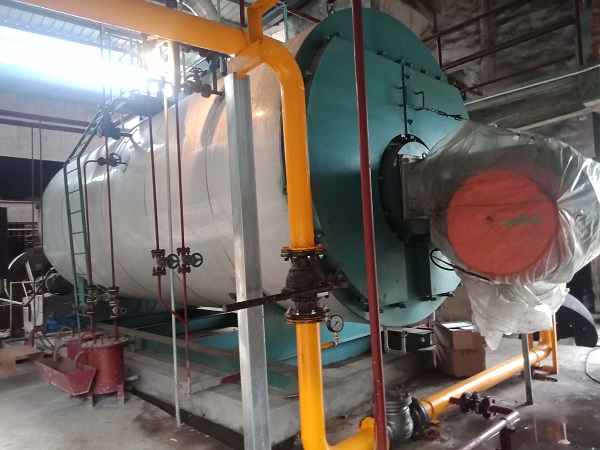Guide: If gas boilers and gas-fired steam boilers are not purged or mis-operated before ignition, nozzles are defective or incompletely burned, and the fuel is not cut off quickly when the flame is extinguished, it is easy to cause excessively high wind pressure in the furnace and tail flue. It will cause explosion and re-combustion, and Binghui will cause the furnace wall and flue to crack, collapse, and the tail heats up and burns out.
If gas boilers and gas-fired steam boilers are not purged or mis-operated before ignition, nozzles are defective or incompletely burned, and the fuel is not cut off quickly when the flame is extinguished, it is easy to cause excessively high wind pressure in the furnace and tail flue. It will cause explosion and re-combustion, and Binghui will cause the furnace wall and flue to crack, collapse, and the tail heats up and burns out.
In order to prevent the furnace and flue air pressure from being too high, the current common method is to install an explosion-proof door on the boiler wall.
1. The role and principle of the explosion-proof door
When the furnace wall or flue explodes, the explosion-proof door can automatically open and release the pressure to avoid the furnace wall cracking and collapse accidents.
Explosion-proof door mainly uses its own weight or strength. When it is greater than or equal to the normal pressure of the furnace, and the total pressure acting on it is balanced, the explosion-proof door is in a closed state. When the furnace pressure changes and the total pressure acting on the explosion-proof door exceeds the weight or strength of the explosion-proof door itself, the explosion-proof door will be reopened or broken, and a part of the flue gas in the furnace will be released, and the pressure will be relieved. purpose.

2. The form and structure of the explosion-proof door
Commonly used explosion-proof doors have two forms: flap type and blasting membrane type.
flap type explosion-proof door is also called swing type explosion-proof door. It is mostly installed on the road wall of the combustion chamber. According to its installation position, it is divided into two types: inclined type and vertical type. Both are composed of door frames, door covers, hinges and other components.
Bursting membrane type explosion-proof door is mostly installed on the flue, which is composed of a blasting membrane and a clamping device. Blasting membranes are generally made of asbestos, aluminum, stainless steel and other metal plates. In order to increase the strength, cross grooves are often pressed on the thin plate. When a gas explosion occurs in the furnace or flue, the explosive film is destroyed by the shock wave, which will relieve the pressure.
3. Requirements for explosion-proof doors
(1) The explosion-proof door is generally arranged in the combustion chamber, the flue at the furnace outlet, the economizer flue, the flue in front of the induced draft fan, the horizontal flue at the rear of the induced draft fan or the flue with an inclination angle of less than 30°.
(2) The explosion-proof door should be installed in a place that does not threaten the safety of the operator, and equipped with a pressure relief guide tube, and no flammable and explosive materials should be stored near it.
(3) The movable explosion-proof door needs to be manually tested regularly to prevent rusting.




























